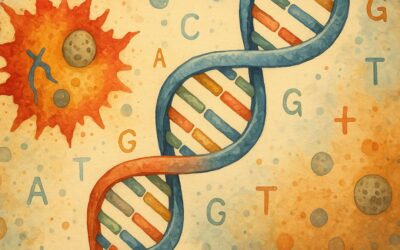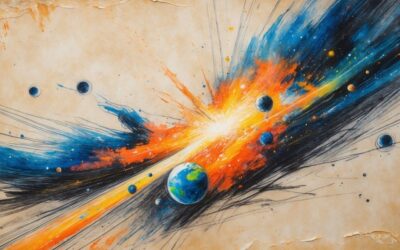Imagine, if you will, a pair of identical twins separated at birth, placed on opposite ends of the Earth. Yet, remarkably, every time one sneezes in Paris, the other, let’s say in Tokyo, reaches for a tissue at the exact same instant. Preposterous, right? While this doesn’t happen in our everyday lives, in the bizarre world of quantum mechanics, such a phenomenon not only exists but challenges the very fabric of reality. This phenomenon is known as Quantum Entanglement.
Now, you might ask, what on Earth (or perhaps, in the universe) is Quantum Entanglement? Let’s simplify. Imagine two particles, let’s call them Alice and Bob. When these particles interact, they become intertwined, forming a deep bond. Once this bond is formed, no matter how far apart they drift, a change in the state of Alice will immediately affect the state of Bob, even if they’re light-years apart. It’s as if Alice and Bob, though separated by vast cosmic distances, are still whispering secrets to each other.
Albert Einstein, with his wavy hair and penchant for deep thought, famously dubbed this phenomenon “spooky action at a distance.” Why spooky? Because this instant communication defies the universal speed limit: the speed of light. Einstein’s world was classical, predictable, and entanglement seemed to challenge the very underpinnings of his universe.
Yet, this isn’t a ghost story, but a fundamental aspect of the universe, affirmed by countless experiments. The discovery of entanglement ushered in a new era, the era of Quantum Physics, and this enigma became the foundation stone for technologies that today seem almost magical.
Consider, for a moment, your computer or smartphone. The rapid advances in these technologies can be traced back to an understanding of quantum principles. Or ponder over the promise of quantum computers, devices that could revolutionize industries, making calculations in seconds that would take current supercomputers millennia. At the heart of such quantum computers lies the principle of entanglement.
But how does this apply to our day-to-day existence? Beyond the realm of advanced technology, the concept of entanglement teaches us something profound about the nature of reality. It hints that everything in the universe is deeply interconnected, that separation is but an illusion. In a philosophical sense, it paints a picture of unity, suggesting that every particle, every star, every human, is part of a grand cosmic dance.
Now, let’s bring it closer to home. Remember the last time you felt an inexplicable connection with someone? A feeling that transcends words, where you could sense their emotions, their thoughts, even from afar? While it’s not quantum entanglement in the scientific sense, it echoes the same principle—that there are connections, threads invisible to the naked eye, that bind the universe together.
Understanding quantum entanglement matters. Not just for physicists in their lofty labs, but for each one of us. It pushes the boundaries of what we know, urging us to rethink our place in the cosmos. It propels us into a future where distances become irrelevant, where the impossible becomes plausible, and where the universe, vast and mysterious, feels a little more like home.
In the grand tapestry of existence, quantum entanglement is but one thread, yet it weaves a story of wonder, unity, and endless possibility. So, the next time you gaze up at the stars, remember: there’s a dance of particles, a whisper of secrets, an entangled universe that sings of mysteries waiting to be unraveled. And in that universe, in that dance, each one of us has a part to play.










0 Comments